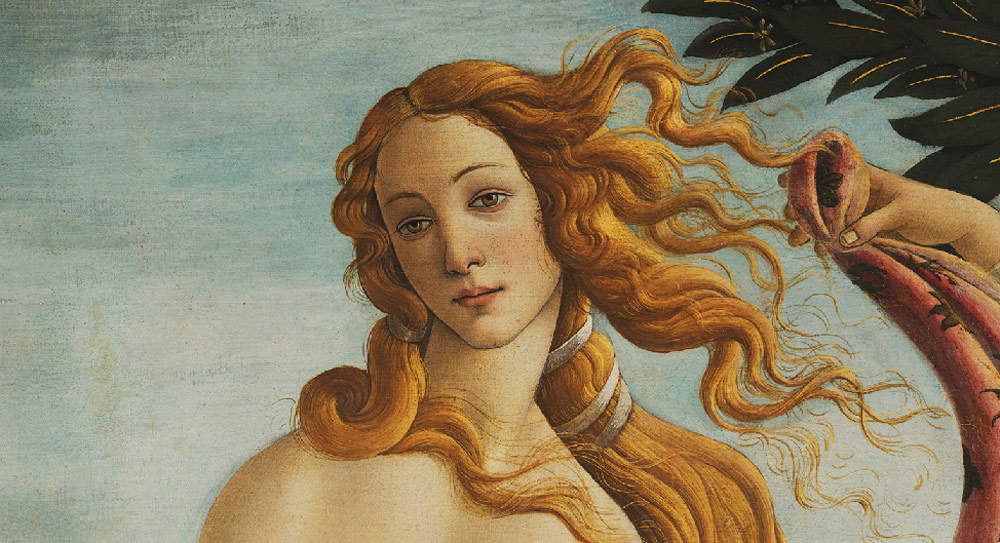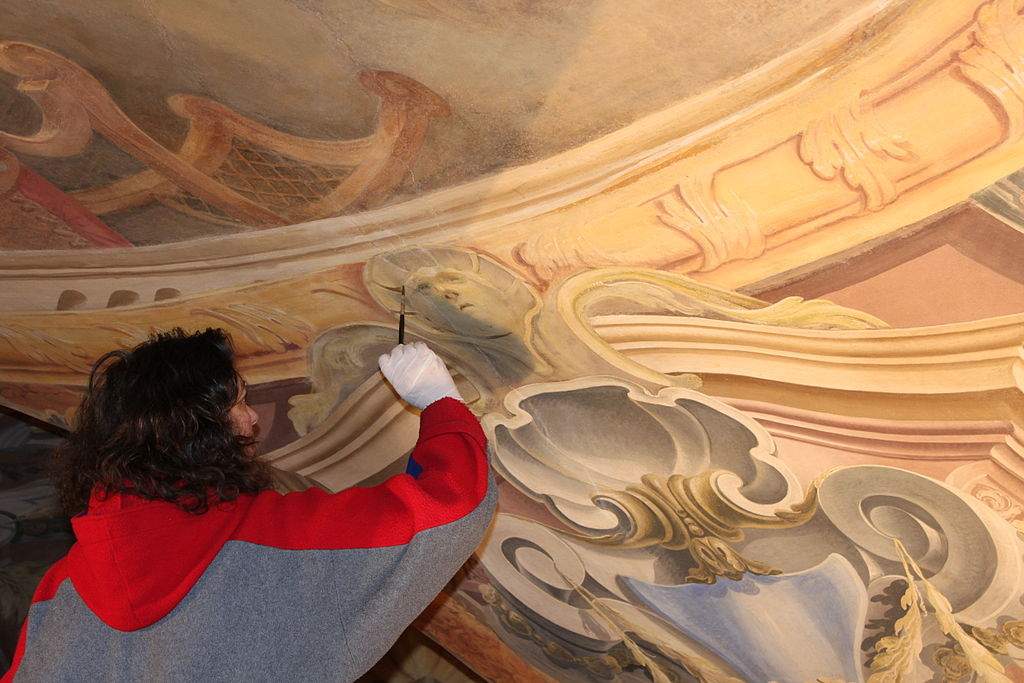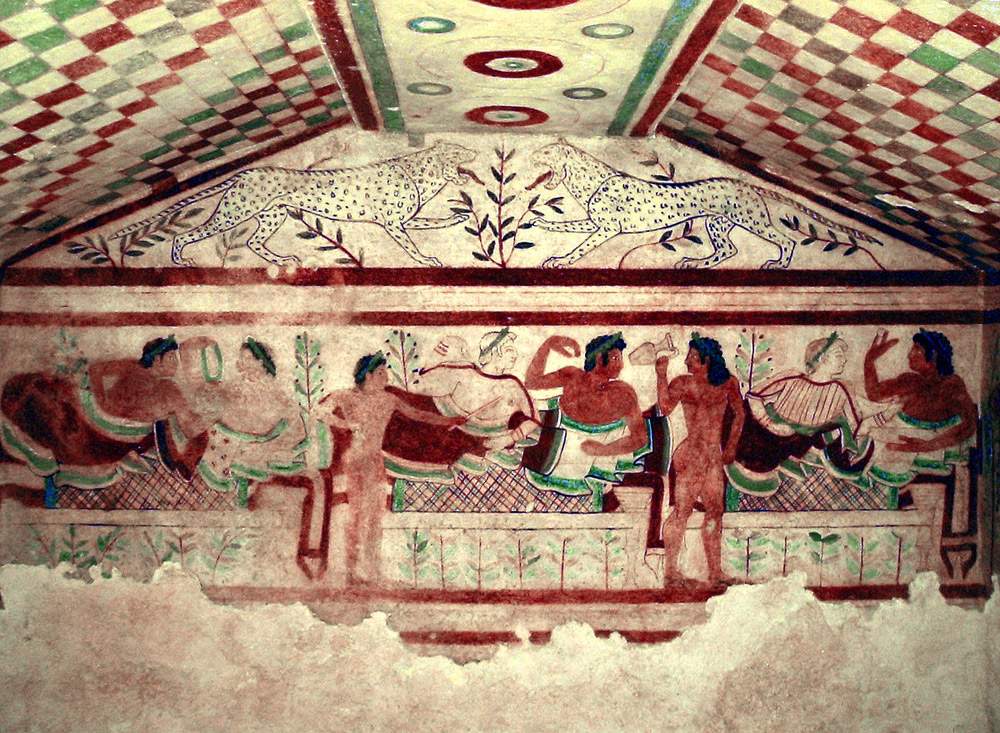Dreading Christmas lunch with relatives? Here are 10 artistic arguments to defend you against 10 types of harassing relatives
Tired of always hearing about the same old topics at Christmas lunch? Don’t know how to get away from the fanatical uncle who starts talking (out of turn) about politics after the second salmon tartine, the soccer-loving cousins who manage to get through half an hour of conversation on the passionate topic of Ancelotti’s exoneration from Napoli, the grandmother who asks you what you’re waiting for to find a boyfriend or girlfriend, the sister-in-law who has already been in a mood since New Year’s Eve and is already about to start muddling your ammunition by minutely describing all the details of her vacation to Santo Domingo? This year you don’t have to stand in the corner of the table, pretend that your relatives’ speeches interest you, or feign indisposition at the arrival of the cappelletti in broth: be the protagonists of the lunch with the pesky relatives. We give you ten artistic discussion topics for ten different types of relatives. Ten defensive strategies with which you will gain absolute respect and, above all, peace of mind.
1. The crib enthusiast
In every self-respecting family there is always a relative who is a nativity scene enthusiast, who has already planned all December weekends since mid-August in the function of visiting all the living nativity scenes in the surrounding area (and, of course, he asks you if you don’t like them, you, out of sheer courtesy, say yes, at which point the relative goes wild). Tell him about a masterpiece by Federico Brandani, the Nativity Scene at the Oratory of San Giuseppe in Urbino. It is also our most recent in-depth review, so chances are you haven’t read it yet.
 |
| Federico Brandani, Nativity Scene (1545-1550; life-size stucco sculptures; Urbino, Oratory of San Giuseppe) |
2. The qualunquist in politics
Do you, too, fear the relative who teams all the diners to figure out who to provoke in order to attack his sovereignist “we were better off when we were worse off” gobbledygook or his peana to the sardines that will save the world? As soon as he attacks (or praises, depending on your orientation) Malta’s actions on the migrant issue (“and the Maltese why don’t they take them?!?!” or “the Maltese can’t take them all themselves!!!”: he’s sure to get there anyway), take the opportunity to let them know that Malta is not only a migrant landing point but also an extraordinary place of art and culture: tell them about the Oratory of St. John the Baptist where masterpieces by Caravaggio and Mattia Preti are kept.
 |
| Oratory of San Giovanni Decollato. Ph. Credit Michael Jones |
3. The art qualunquist
Similar to the relative described above, but with an extra skill: he knows your passion for art. Surely (rest assured: if he knows you like art, he’s mathematical) he will tell you about Cattelan’s banana (in case, defend yourself with the positions of the critics we have collected in this article), and then take a path back through art history to Lucio Fontana, and there is the beginning of the end. “This Fontana is clever, he made money by cutting canvases.” “I was capable too.” “But is this art? Caravaggio must be laughing.” And the like, you don’t need us to list all the clichés of the qualunquist relative of art. Let him know, quoting Gillo Dorfles, that after all, cutting a canvas was not exactly the most obvious thing.
 |
| Lucio Fontana, Spatial Concept. Waiting (1959; watercolor on canvas, 100 x 81 cm; Rovereto, MART - Museo di Arte Moderna e Contemporanea di Trento e Rovereto, on deposit from private collection; © Lucio Fontana Foundation) |
4. The Encyclopedic
At Christmas dinner there will always be a relative who wants to know everything about everything. The cousin who was always top of the class and is now about to finish his doctorate in astrophysics, the uncle who flaunts his notions in any field of human endeavor, the know-it-all niece who has returned from her fourth year of high school in the United States and is already planning for after graduation. One of these relatives knows about your passion for art and will want to show that he knows more about it than you do: take the discussion to a terrain favorable to you, talk about Botticelli’s Venus, and when the encyclopedic relative (because he will do so much) brings up the “Simonetta-Vespucci-musa-of-Botticelli” antics, make them make the first embarrassment of their careers at Christmas lunches by telling them how things really were. Don’t thank us, that’s our job.
 |
| Sandro Botticelli, Detail of the Birth of Venus (c. 1482-1485; tempera on canvas, 172.5 x 278.5 cm; Florence, Uffizi) |
5. The one who makes the dirty jokes
There is no family in which there is not also a crude relative who at the first opportunity places a dirty joke or tells a sex joke. And since, it is known, the practice of sex usually is inversely proportional to the frequency with which it is talked about, annihilate him by talking to him about what sex was like in the sixteenth century by shifting the subject to the exhibition on desire in Giulio Romano’s art in Mantua. And maybe recommend a visit!
 |
| Copy (mirror) from Marcantonio Raimondi (c. 1480-1534) from position 9 of I Modi, numbered II (1530-1540; burin engraving, 134 x 188 mm; Vienna, Albertina) |
6. What stresses you about your work situation.
It is a condition that, at every Christmas lunch, always falls to the younger diners. There is always an aunt giving you a third degree about your current work situation. Especially if you work in the culture. What do you do? But how much do you make? Yes, but do you have a real job? Ah but so if you study art history then you become like Sgarbi? But is it true that you who work in archaeology always find some dinosaur fossil? But the Etruscan vases you find then can you resell them? Nip the whole discussion in the bud and let your relatives know what the situation is like for cultural professionals in Italy. Because they certainly have no idea.
 |
| Restorer at work |
7. The TV drama buff.
Every Christmas do you find yourself struggling with the grandmother who doesn’t miss an episode of The Place in the Sun, with the cousin who has been trying to urge you to watch The Game of Thrones for years, the brother who has found an avid TV series marathoner girlfriend on Netflix and is trying to drag you into this vortex of perdition? Show that you, too, not only keep up, but also know more: amaze them by telling them about the locations where they set the last season of The Medici.
 |
| A still from The Medici |
8. The relative Masterchef
The baleful continuing proliferation of TV shows devoted to food has turned many TV viewers who previously had difficulty even preparing a fried egg into vain Masterchefs, so at Christmas dinner there is sure to be a cousin, an uncle or a random relative who will tell you about his latest creation with colatura d’alici di Cetara or with Acqualagna truffle shavings, or he will tell you about his last experience at the starred restaurant in the neighboring town, which, however, did not satisfy him much because the mise-en-place was not correct or because the chef did not even deign to delight him with an amouse-bouche. If you, too, are of the opinion that a good dish of pesto pasta is more than enough to satisfy the palate and think that “Jerusalem artichoke” is the name of an Asian rodent, defend yourself by talking to your relative Masterchef about Etruscan cuisine: you will surely be able to catch him off guard and steer the conversation in your favor by diverting from cooking to archaeology.
 |
| Etruscan Art, Banquet Scene (473 B.C.; fresco; Tarquinia, Tomb of the Leopards) |
9. The Instagrammatic
Whether it’s because of the 14-year-old granddaughter who uses it as a means of communication with peers, the out-of-school college cousin who aspires to be a fashion blogger and will update you on the progress of her follower count, or the recently computer-literate mother-in-law who finds it hilarious and wants to share it with you, Instagram has now become a popular topic of Christmas dinner conversation with relatives. Everyone now feels a bit like Steve McCurry, after all: so let your influencer cousin (or whomever) know what it’s like to be a real photographer by telling her about one of Steve McCurry’s most famous shots. You may not be able to reduce their cravings for taking pictures everywhere, but you will certainly tell them an interesting story.
 |
| Steve McCurry, Weligama, Sri Lanka, 1995. © Steve McCurry |
10. The Grinch
Finally, another Christmas lunch classic is the relative Grinch, the one who hates Christmas: he decorated the last tree when Germany was still divided, he wishes jail time for Mariah Carey, he would prefer the tortures of the Spanish Inquisition rather than watch Clerici host a program where the Antoniano choir breaks out the entire repertoire from Astro del ciel to the present, and his favorite quote is Riccardo Garrone’s line in Christmas Vacation (“and this Christmas se lo semo levato dalle palle too”: he repeats it every December 25). If, as is appropriate, you want to be sadistic toward him, talk to him about Andy Warhol ’s passion for Christmas.
 |
| Andy Warhol, Tiffany & Co. Christmas Card (ca. 1956; color print on folded card stock, 14 x 10.8 cm; Private collection) |
 |
| Dreading Christmas lunch with relatives? Here are 10 artistic arguments to defend you against 10 types of harassing relatives |
Warning: the translation into English of the original Italian article was created using automatic tools. We undertake to review all articles, but we do not guarantee the total absence of inaccuracies in the translation due to the program. You can find the original by clicking on the ITA button. If you find any mistake,please contact us.





























